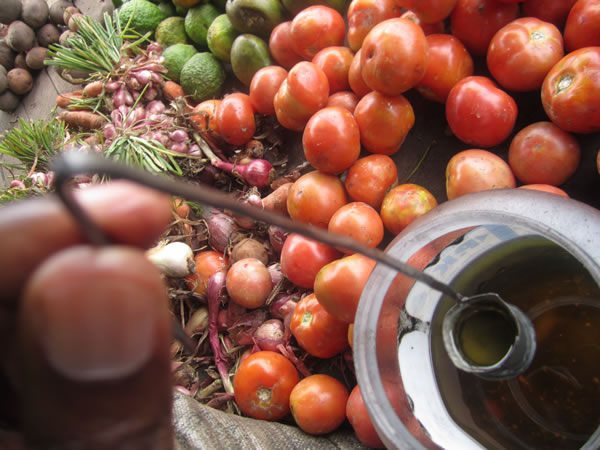Ali Ndiwalana is Research Lead, AppLab Money Incubator, at Grameen Foundation Uganda.

As we strive to ensure that everyone has access to financial services – known as “financial inclusion” – by creating products that reach the poor, we can learn a trick or two from the Fast-Moving Consumer Goods (FMCG) folks that operate in developing countries. FMCGs are cheap, non-durable, staple goods that sell in large quantities, creating enormous cumulative profit. Examples in Uganda include cooking oil, soap, etc. Though the rhetoric from central banks indicates that financial inclusion is a major objective, the reality is usually much different.
Consider the financial sector in Uganda. A typical “down-market” product from the sector – a product it markets to the poor – is a savings account, but the average minimum balance to open a savings account is 50,000 UGX (about US$20), which also happens to be the minimum balance. When you factor in withdrawal and management fees, it is no wonder that so few poor people use banking services.
During a recent field trip to western Uganda, I was astonished to see the number of FMCG products sold in small quantities (sachets). These are much cheaper and accessible down-market. The smallest sachet of Fortune cooking oil is 50ml and costs 400 UGX (about 16 US cents). Now, that is affordable and down-market. FMCG producers have learnt from small retailers in rural areas that ordinary people can afford to buy their products when offered in appropriate quantity and at reasonable cost. And when more people buy in smaller quantities, it generates more profits.
Although mobile phone operators took head of this – airtime is now available in amounts as small as 50 UGX (about 2 cents) – the story has been different for mobile money. The smallest amount permitted for mobile money transactions was 5,000 UGX (about $2). Airtel is going down-market as it re-launches ZAP as Airtel Money, permitting transactions as low as 500 UGX (about 20 cents). Granted, these small transactions come at a steep cost for transfers or cash-outs (300 UGX or 12 cents each), but transactions are free for cash-ins, enabling a mobile money user to build up large-sums through small incremental cash-ins.
As we strive to leverage the mobile money platform to create new innovative financial products that reach down-market, FMCG products teach us that we need to be able to work with small monetary values, and that such small values can offer huge returns. Can we design business models that empower a user to save or borrow as little as 500 UGX on one hand, while enabling the necessary partnerships it takes to profitably support such services? Are high volumes the only way to sustain such services? If so, how can we drive the necessary volumes to make such down-market business models viable to offer new financial products?

Aspensenafsak
Definitely believe that which you stated. Your favorite reason appeared to be at the internet the easiest thing to keep in mind of. I say to you, I certainly get irked while people think about concerns that they just do not recognise about. You controlled to hit the nail upon the highest and also outlined out the whole thing with no need side effect , other folks can take a signal. Will probably be back to get more.
Absenermeme
Howdy! This is my first visit to your blog! We are a collection of volunteers and starting a new initiative in a community in the same niche. Your blog provided us useful information to work on. You have done a marvellous job!